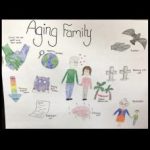
Anticipating the possibility of having to teach remotely or a blend of traditional and virtual, I’ve been trying to revise some of my hands-on activities to make them more compatible with 1:1 technology. The Baby in Progress Hyperdoc is a digital lesson that incorporates the prenatal development concepts learned in the Pregnancy Towers index card activity. The beauty of this Baby in Progress Hyperdoc is that the Pregnancy Tower group activity can be subbed in for the digital “What Month Am I?” activity if traditional teaching returns!










